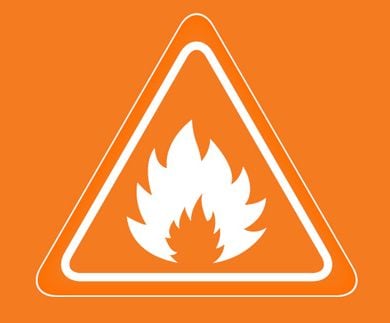This is an excerpt from the September/October 2013 issue of InTech magazine by Heikki Laurila, product manager for hardware products at Beamex Oy Ab. To read the full article, please see the link at the bottom of this post.
What is a hazardous area? A hazardous area is an area (inside or outside) that contains, or may contain, flammable substances. The flammable substance may be a liquid, gas, vapor, or dust. The area may contain a flammable substance all of the time, most of the time, or only in specific situations, such as shutdowns or incidents.
In such a hazardous area, an explosion or fire is possible if all the three conditions of the “explosion triangle” are met. These three conditions are fuel (a flammable substance), a source of ignition (or heat), and oxygen (air). The explosion triangle is often presented as a triangle, therefore the name.
How to prevent an explosion
If we keep in mind the explosion triangle and think about how an explosion can be prevented, we come to the conclusion that one or some of the three elements of the explosion triangle must be eliminated. Many times, it is not possible to eliminate the flammable substance, so the oxygen (air) or the source of ignition has to be eliminated. It is also often impossible to eliminate the air. Therefore, the most practical solution is to eliminate the source of ignition, spark, or heat.
In the case of electrical calibration equipment, it can be specially designed for use in hazardous areas. There are many ways to design electrical equipment suitable for hazardous areas, and this topic will be discussed later. Often calibration equipment has been designed so that it cannot provide enough energy to cause the source of ignition, spark, or heat.
Some of the first hazardous areas were discovered in the early coal mines. Both the coal dust and the methane absorbed created a hazardous area, because they are flammable substances. As the lighting in early mines was created by candles and torches, there was also a source of ignition. This caused many accidents.
Later on when the electrical equipment (lighting, tools) began to be used in the mines, there were accidents caused by the electrical equipment (sparking or heating). Eventually standards were developed to guide the design process in order to prevent sparking and heating of electrical equipment. These were the first “intrinsically safe” electrical equipment and led the way to the actual standards for equipment used in hazardous areas today.
To read the full article on calibration in hazardous areas, click here.
About the Author
Heikki Laurila is product manager for hardware products at Beamex Oy Ab, Finland, where he has worked for 25 years. Beamex provides products and services for the calibration of process instrumentation. Contact Heikki at heikki.laurila@beamex.com.



